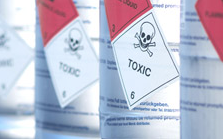The cytotoxic action of MTX is related to the cell cycle. It inhibits the synthesis of DNA, RNA,
thymidylates and proteins by acting as a competitive antagonist of folic acid. For this reason,
the drug has a greater toxic effect on cells with a high replication rate, such as malignant
tumor cells. MTX compromises tumor growth without causing irreversible damage to normal
tissues. However, the inhibition of the development and proliferation of non-cancerous
cells can lead to a series of unexpected side effects. Low doses of MTX are effective against
rheumatoid arthritis, Crohn’s disease and psoriasis. Due to the narrow therapeutic index of
this drug, it is necessary to determine the MTX concentration in serum of patient in order to
avoid intoxication (if elevated) or therapeutic failure (if low). The determination of the two main
inactive metabolism is useful to monitor the pharmacokinetic trend of the molecule. 7-OHMTX,
the main metabolite of the drug, has been recognized as the main cause of nephrotoxicity
because of its precipitation in the renal tubules causing kidney damage. DAMPA has a lower
toxicity than 7OH-MTX. Although clinically less interesting, DAMPA is to be considered as an
analytical problem because of its cross-reactivity in the immunochemical dosage of MTX,
leading to an overdose of the drug. Differently, HPLC-MS/MS methods are not affected by this
problem, allowing to determine the two molecules individually.






